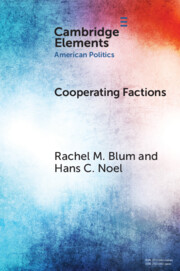Element contents
Cooperating Factions
Published online by Cambridge University Press: 22 November 2024
Summary
- Type
- Element
- Information
- Series: Elements in American PoliticsOnline ISBN: 9781009495615Publisher: Cambridge University PressPrint publication: 19 December 2024

